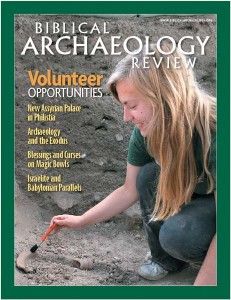
Although BAR readers may be familiar with my work on Qumran and the Dead Sea Scrolls, much of my research has focused on ancient pottery. In fact, I started out as a ceramics specialist, writing a dissertation on the Late Roman and Byzantine pottery of Jerusalem (a topic, I was warned, that would never get me a job!). Whereas archaeologists who specialize in earlier periods pay a lot of attention to pottery, archaeologists working in the Roman and Byzantine periods tend to focus on more “glamorous” remains such as monumental structures, mosaics and inscriptions.
Recovered by the crate load, potsherds are the most common find on archaeological excavations in Israel, far surpassing other categories of artifacts. Pottery is abundant because it is virtually indestructible; unlike organic materials it does not disintegrate over time, and unlike stones and metal objects, broken pottery cannot be recycled and therefore was discarded (although potsherds were put to secondary use, for example as ostraca—a type of ancient Post-it note). Potsherds are also abundant because everyone in antiquity—rich and poor, rural and urban—owned ceramic dishes.
Already a library member? Log in here.
Institution user? Log in with your IP address.

